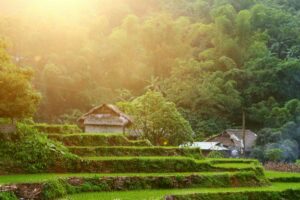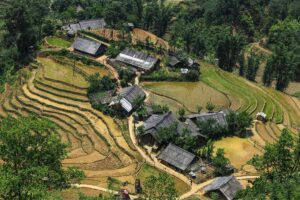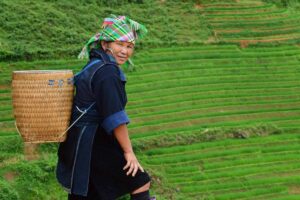Ban Ho Village, located near Sapa in northern Vietnam, is a charming destination known for its trekking opportunities and homestay experiences. Nestled in the picturesque Muong Hoa Valley, Ban Ho Village offers visitors a glimpse into the traditional lifestyle of the Tay ethnic group and the natural beauty of the region.
About Ban Ho Village
Location
Ban Ho Village is situated in northwest Vietnam, within the scenic Muong Hoa Valley. It is approximately 25 kilometers from Sapa, making it accessible for day trips and longer stays.
Ethnic groups
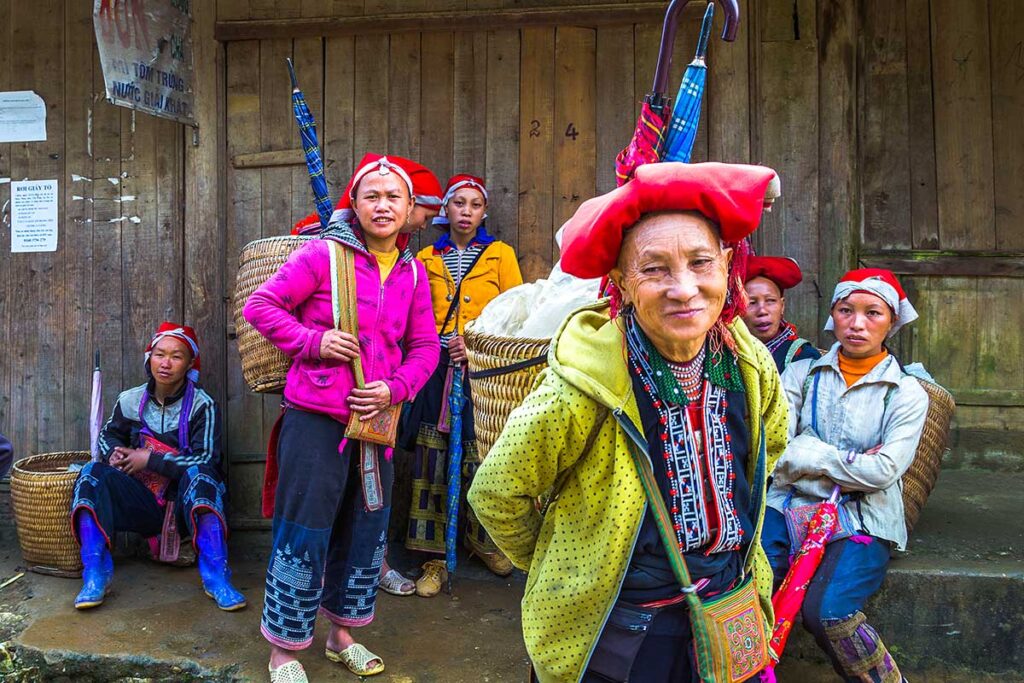
The primary inhabitants of Ban Ho Village are the Tay people. Known for their traditional stilt houses, the Tay community practices highly-developed rice farming techniques and cultivates cotton, mulberries, and silkworms. The Tay women are renowned for their brocade weaving, creating beautiful costumes and home decoration products that reflect their rich cultural heritage.
The village
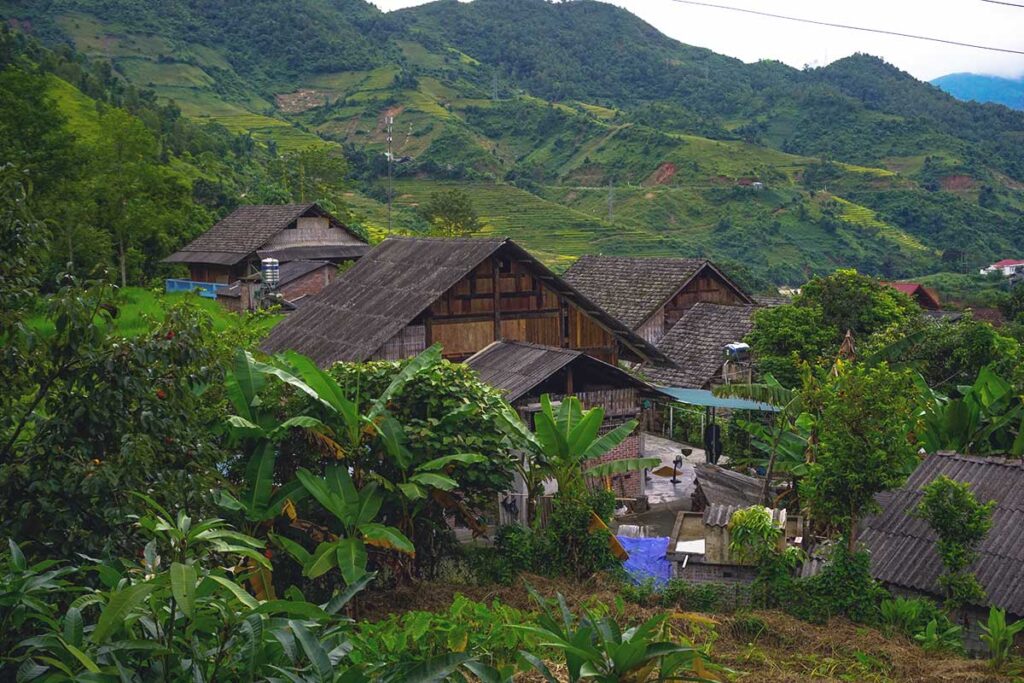
Ban Ho Village is a traditional Tay settlement characterized by stilt houses that blend harmoniously with the natural surroundings. The village has a long history and features a layout typical of Tay communities, with houses arranged to optimize agricultural and social activities. The exact age and size of the village may not be well-documented, but its cultural richness and traditional way of life are evident in every corner.
Highlights of Ban Ho Village
1. Exploring ethnic minority life
Walking through Ban Ho Village offers an intimate look at the daily lives of the Tay people. You can observe the villagers working in the fields, weaving brocade, and going about their traditional routines. Communicating with the locals through a guide can help bridge language barriers and provide deeper insights into their customs and traditions.
2. Homestay experience
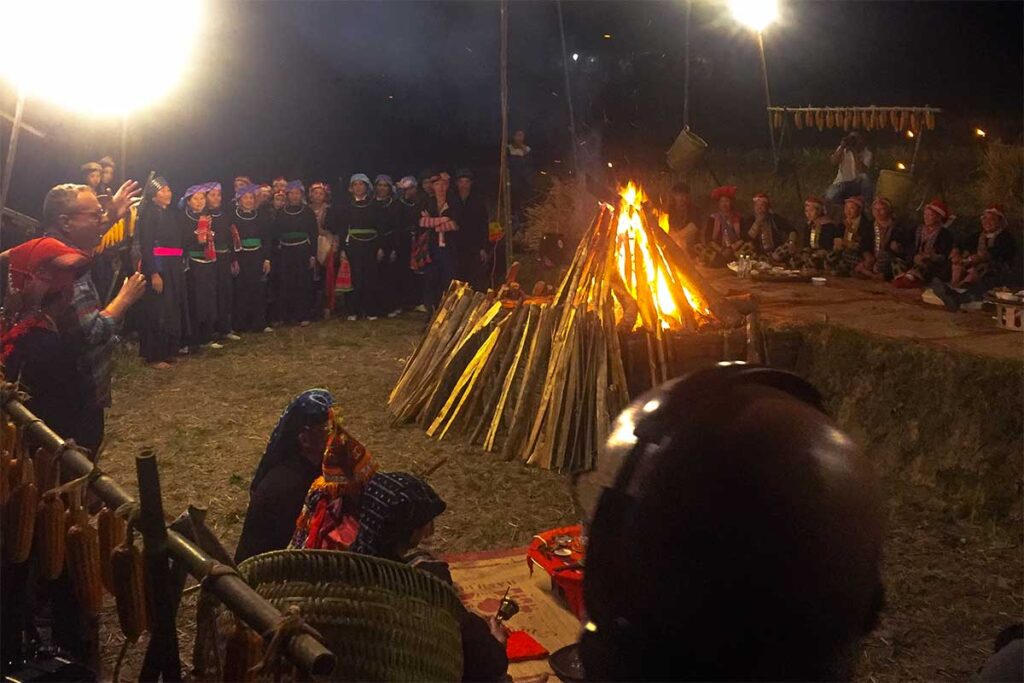
Staying in a homestay with an ethnic Tay family is a unique and enriching experience. While the accommodations are basic, the warmth and hospitality of the hosts make it memorable. Sharing a family dinner, trying local dishes, and participating in daily activities offer a genuine connection to the local culture.
3. Trekking destination
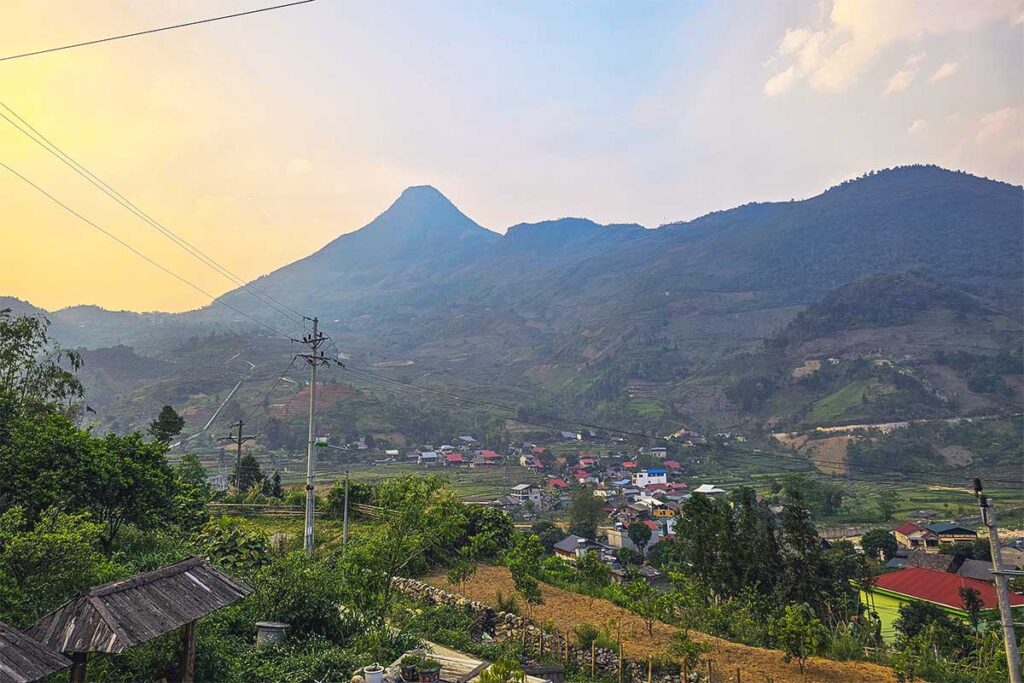
Ban Ho Village is a trekking destination for both off the beaten day tours and multi-day adventures. The trails around the village lead through terraced rice fields, bamboo forests, and picturesque landscapes, providing trekkers with breathtaking views and an immersive nature experience.
4. Swimming in the strea
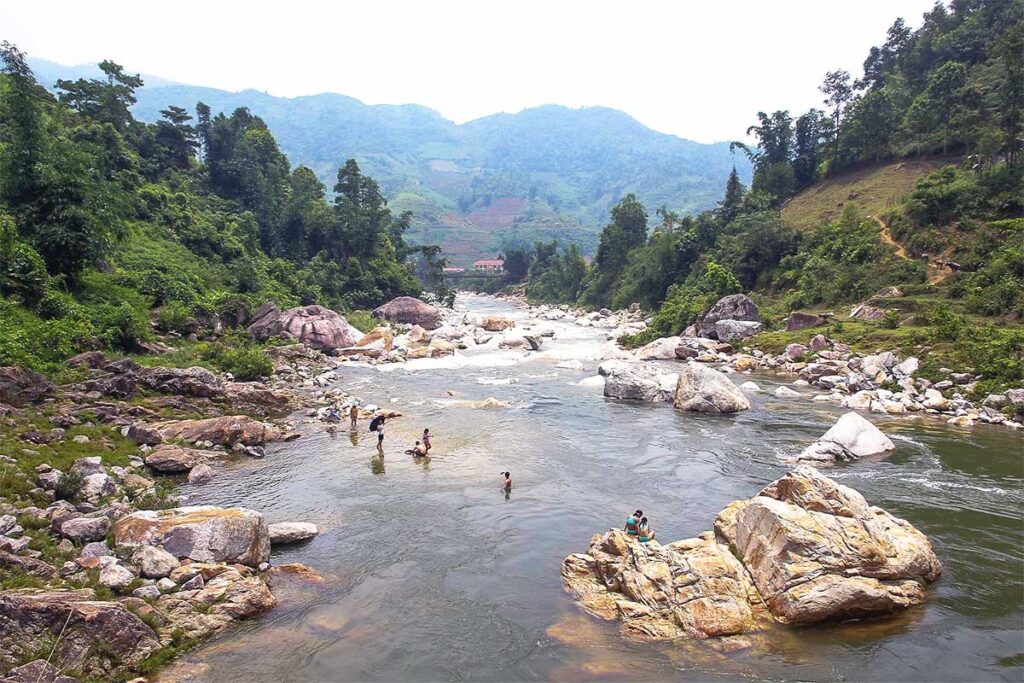
Ban Ho Village is where the Muong Hoa Stream meets the La Ve Stream. After a hike, cooling down in the local stream is a refreshing experience. The warmer temperatures in Ban Ho, due to its lower elevation compared to Sapa, make swimming especially enjoyable.
5. Herbal bath at Nam Toong Village
Nearby Ban Ho is the Red Dao village of Nam Toong, renowned for its herbal baths. The Red Dao herbal bath involves soaking in a tub filled with medicinal herbs, known for their relaxing and health benefits. You can enjoy a herbal bath here, providing a soothing end to a day of exploration. The cost of an herbal bath is typically around $5-$10.
6. Enjoy local cruise
The cuisine of Ban Ho is another highlight, featuring fresh and delicious dishes such as grilled stream fish, pickled bamboo shoots, sticky rice cooked in bamboo, and grilled chicken and pork. These dishes can be enjoyed during a family dinner in a homestay, offering a taste of the local culinary traditions.
How to get there
Ban Ho Village is located in the scenic Muong Hoa Valley, one of the furthest villages from Sapa town. Despite its remote location, it is relatively easy to reach, being close to the main Muong Hoa Road that runs through the valley and visible on Google Maps.
To get to Ban Ho, your first step is to travel to Sapa, as there are no direct transportation options from Hanoi to the villages in Muong Hoa Valley.
From Hanoi to Sapa:
- Limousine Bus: A comfortable daytime option.
- Sleeper Bus: Available at night but not recommended for comfort.
- Train: Travel from Hanoi to Lao Cai station, then either take a direct taxi to Ban Ho or first travel to Sapa.
From Sapa to Ban Ho Village:
- Trekking: Ban Ho Village is included in some trekking tours, particularly for multi-day treks or those exploring the less-visited parts of Muong Hoa Valley.
- Taxi: Taxis are readily available in Sapa town (not Grab). While some homestays in Ban Ho cannot be reached directly by car, the taxi can bring you close enough. Motorbike taxis can take you directly to the door. The whole drive from Sapa is approximately 25 km and costs about 300,000 VND.
- Renting a Motorbike or Scooter: A more affordable option is to rent a motorbike in Sapa. Navigation is straightforward, mostly along a single road. However, it is not recommended to drive in the mountains without experience or a valid motorbike license.
Homestays in Ban Ho Village
What to Expect
Options: Homestays in Ban Ho range from basic to more comfortable options. While luxury is not the norm, some homestays offer modern amenities like Wi-Fi and private rooms. Basic homestays might have shared dorm-style rooms with simple mattresses, but they often provide a more authentic cultural immersion. Regardless of the type, all homestays in Ban Ho are required to have Western-style toilets, showers, and mosquito nets.
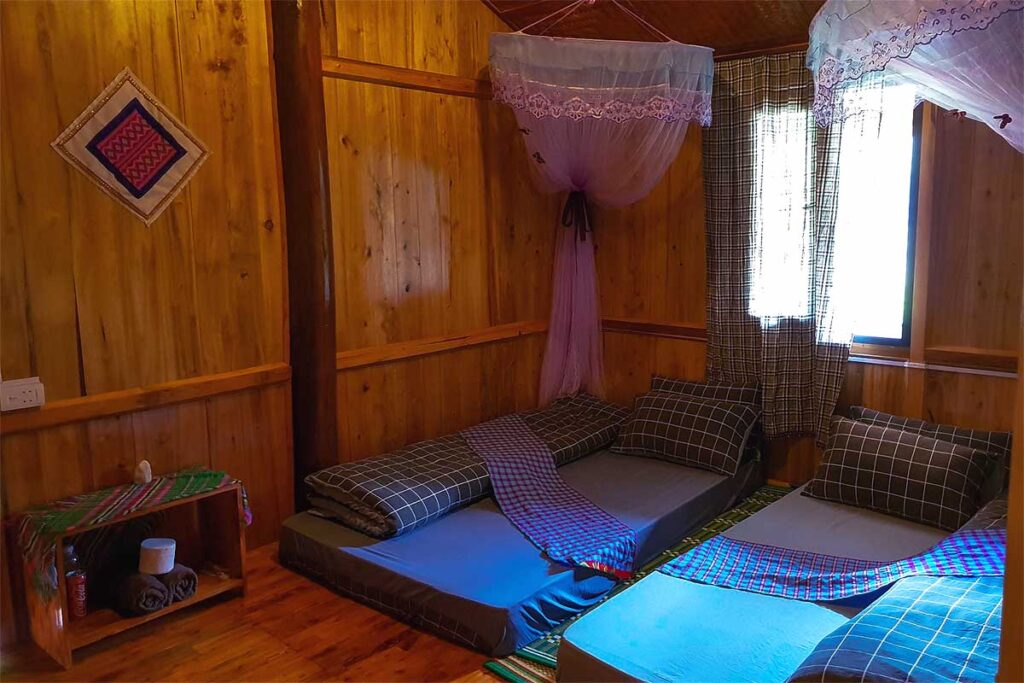
Family Dinner: A highlight of staying in a Ban Ho homestay is the family dinner experience. You’ll witness the preparation of traditional dishes over an open fire and share a meal with the family. This is a unique opportunity to learn about local cuisine and connect with the warm hospitality of the Tay people. You might even be offered a taste of homemade rice wine, which you can politely decline if you prefer not to drink.
Tips for visiting the village
- Gifts for Children: Do not give candy or money. Instead, offer books or pencils, which are more useful.
- Photography: Always ask for permission before taking photos of people.
- Respect the Fields: Avoid standing in the rice fields, as they are the livelihood of the locals.
- Best Time to Visit: March, April, May, September, October, and November for the best weather. To see the rice fields, visit between July and early September, although this is the rainy season.
- Local Sellers: Some locals may follow you to chat and try to sell products. A friendly “No” will eventually discourage them if you’re not interested.
- Other Villages to Visit: Lao Chai, Ta Van, Giang Ta Chai, Nam Cang
